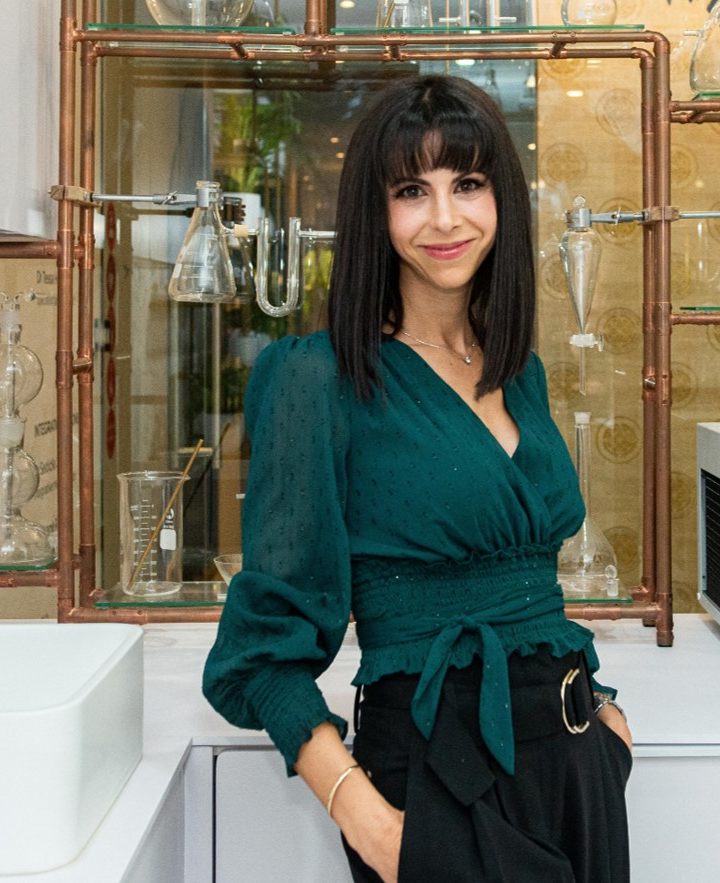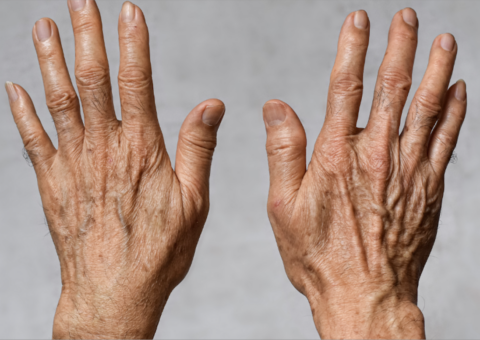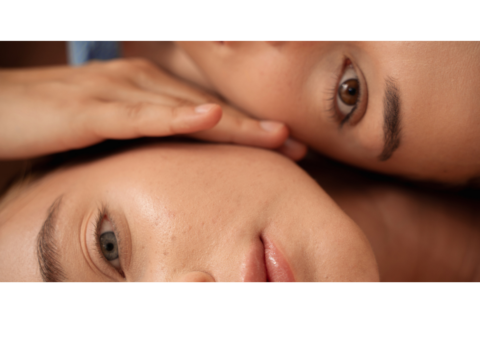It’s not a myth that UV rays damage your skin: skin cancer aside, think wrinkling, broken capillaries and pigmentation. There is a reason why on summer holidays I pretty much go incognito between my huge sunhat, sunglasses and rash vests. I used to love the feel of the sun on my face: now all I can think about is undoing all the good that my Broad-Band Light therapies (BBLs) have done!
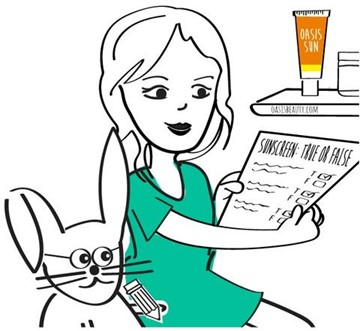
So sunscreen is my no. 1 year-round skincare staple. Summer, winter, indoors and outdoors (read why on my top sunscreen tips here) – but it is the skincare product most shrouded in controversy. Here are some of the most common statements I hear from my patients around this topic and the real truth based on scientific evidence. So hold on to your zinc oxide – we are about to do some myth-busting!

 Unless you are an earthworm, you’re going to be exposed to the sun. Driving to and from work, shopping, and watching our kids as they run around a soccer field exposes us to UV radiation so get into the habit of using sunscreen daily. Don’t forget that damaging UVA rays can penetrate through glass windows. Not only that but we are living in the era of digital ageing where blue light (also known as high energy visible light) from our devices are contributing to pigmentation and wrinkles. Applying sunscreen daily should be as natural a part of your routine as brushing your teeth.
Unless you are an earthworm, you’re going to be exposed to the sun. Driving to and from work, shopping, and watching our kids as they run around a soccer field exposes us to UV radiation so get into the habit of using sunscreen daily. Don’t forget that damaging UVA rays can penetrate through glass windows. Not only that but we are living in the era of digital ageing where blue light (also known as high energy visible light) from our devices are contributing to pigmentation and wrinkles. Applying sunscreen daily should be as natural a part of your routine as brushing your teeth.

 Even when the sun doesn’t appear to be shining brightly, UV rays are still present and 80% of of the sun’s UV rays will pass through the cloud cover to beat down on your skin. So you need to slather up even on cloudy days. Some of the worst sunburns I’ve seen have happened on cloudy and windy days when my patients’ guards are down because they can’t feel the sun’s burn.
Even when the sun doesn’t appear to be shining brightly, UV rays are still present and 80% of of the sun’s UV rays will pass through the cloud cover to beat down on your skin. So you need to slather up even on cloudy days. Some of the worst sunburns I’ve seen have happened on cloudy and windy days when my patients’ guards are down because they can’t feel the sun’s burn.

 Melanin, the pigment that gives our skin its colour, only provides the equivalent of an SPF of about 1.5 to 2. Although people with darker skin tones have a lower risk of skin cancer, the risk is not eliminated altogether. In fact, skin cancer is often diagnosed when it is more advanced and potentially fatal in darker phenotypes. People with dark skin, hair and eyes can — and do — get skin cancer. Particularly vulnerable areas include under the fingernails and toenails, on the palms of the hands and on the soles of the feet — where skin is lighter.If you have a darker skin, you are also more prone to pesky pigmentation and religious use of sunscreen remains your best defense.
Melanin, the pigment that gives our skin its colour, only provides the equivalent of an SPF of about 1.5 to 2. Although people with darker skin tones have a lower risk of skin cancer, the risk is not eliminated altogether. In fact, skin cancer is often diagnosed when it is more advanced and potentially fatal in darker phenotypes. People with dark skin, hair and eyes can — and do — get skin cancer. Particularly vulnerable areas include under the fingernails and toenails, on the palms of the hands and on the soles of the feet — where skin is lighter.If you have a darker skin, you are also more prone to pesky pigmentation and religious use of sunscreen remains your best defense.

 Studies prove that sunscreen use has minimal impact on Vitamin D levels, with most South Africans getting enough UVB for Vitamin D synthesis through incidental sun exposure. If you want to ensure that you are getting enough Vitamin D, then get your levels tested and supplement if suboptimal (Vitamin D is fat-soluble so this is one vitamin you can over-dose on!). You can also up your intake of high Vitamin D-containing foods such as oily fish and cod liver oil. What is not controversial is the overwhelming evidence that the sun’s UV rays cause skin cancer. So increasing time spent in the sun isn’t an advisable way of making sure that you are making enough Vitamin D. Also, the body can only produce a limited amount of Vitamin D at a time. Extended periods of time in the sun does not increase your Vitamin D levels but they do increase your skin cancer risk. Our colder June/ July months when the UV index typically falls below 3 is when it is beneficial to spend time outdoors to soak up some winter sun to support winter Vitamin D production.
Studies prove that sunscreen use has minimal impact on Vitamin D levels, with most South Africans getting enough UVB for Vitamin D synthesis through incidental sun exposure. If you want to ensure that you are getting enough Vitamin D, then get your levels tested and supplement if suboptimal (Vitamin D is fat-soluble so this is one vitamin you can over-dose on!). You can also up your intake of high Vitamin D-containing foods such as oily fish and cod liver oil. What is not controversial is the overwhelming evidence that the sun’s UV rays cause skin cancer. So increasing time spent in the sun isn’t an advisable way of making sure that you are making enough Vitamin D. Also, the body can only produce a limited amount of Vitamin D at a time. Extended periods of time in the sun does not increase your Vitamin D levels but they do increase your skin cancer risk. Our colder June/ July months when the UV index typically falls below 3 is when it is beneficial to spend time outdoors to soak up some winter sun to support winter Vitamin D production.

 It’s true that sunburns in childhood have a disproportionate effect on the risk of melanomas and basal cell carcinomas down the line. A couple of blistering sunburns in your youth can double your risk of melanoma. But squamous cell carcinomas are more affected by cumulative sun exposure over the years so there is always time to prevent further damage to your skin. There have also been studies which show that only 25% of damage happens before the age of 18 so your sun behaviour as an adult is critical. Ongoing sunscreen use also reduces the number of new precancerous skin lesions called actinic keratoses and reduces the number of existing actinic keratoses in people over the age of 40 years old. Finally, we also now have access to sophisticated sunscreens such as ISDIN Eryfotona AK-NMSC and Heliocare 360° AK Fluid containing DNA repair enzymes which can actually reverse sun damage. A study published in the Lancet in 2001 demonstrated 68% less precancerous lesions and 30% fewer basal cell skin cancers in 30 patients after one year’s use of a cream containing DNA repair enzymes. Also don’t forget that regular sunscreen use puts the brakes on skin ageing, helping to reduce the skin thinness, easy bruising and poor healing that older skin can be prone to. And of course, getting burnt feels terrible at any age.
It’s true that sunburns in childhood have a disproportionate effect on the risk of melanomas and basal cell carcinomas down the line. A couple of blistering sunburns in your youth can double your risk of melanoma. But squamous cell carcinomas are more affected by cumulative sun exposure over the years so there is always time to prevent further damage to your skin. There have also been studies which show that only 25% of damage happens before the age of 18 so your sun behaviour as an adult is critical. Ongoing sunscreen use also reduces the number of new precancerous skin lesions called actinic keratoses and reduces the number of existing actinic keratoses in people over the age of 40 years old. Finally, we also now have access to sophisticated sunscreens such as ISDIN Eryfotona AK-NMSC and Heliocare 360° AK Fluid containing DNA repair enzymes which can actually reverse sun damage. A study published in the Lancet in 2001 demonstrated 68% less precancerous lesions and 30% fewer basal cell skin cancers in 30 patients after one year’s use of a cream containing DNA repair enzymes. Also don’t forget that regular sunscreen use puts the brakes on skin ageing, helping to reduce the skin thinness, easy bruising and poor healing that older skin can be prone to. And of course, getting burnt feels terrible at any age.

 While it may seem logical to think that SPF30 is twice as effective as SPF15, that is not the case. An SPF15 suncreen will block out around 93% of UVB rays which cause sunburn, whereas an SPF30 sunscreen blocks out around 96.7% and an SPF50 blocks 98%. Anything higher than that and it just gets silly. So while a higher SPF is certainly better, particularly in view of the fact that people generally apply less than half the amount of sunscreen used during clinical trials (a shot-glass full for a whole body application), even a product with an SPF100 won’t guarantee complete protection. The sunscreen formulation and its water resistance are also critical: a person wearing a thick physical sunscreen containing zinc oxide with an SPF of 30 will be better protected than a person who has sprayed on an SPF100 aerosol. Also don’t forget that the SPF refers to your UVB protection only: high SPF sunscreens give people a false sense of security resulting in longer exposures to equally damaging UVA rays. Make sure that your sunscreen is broad-spectrum. Read more about the ins and outs of sunscreen here.
While it may seem logical to think that SPF30 is twice as effective as SPF15, that is not the case. An SPF15 suncreen will block out around 93% of UVB rays which cause sunburn, whereas an SPF30 sunscreen blocks out around 96.7% and an SPF50 blocks 98%. Anything higher than that and it just gets silly. So while a higher SPF is certainly better, particularly in view of the fact that people generally apply less than half the amount of sunscreen used during clinical trials (a shot-glass full for a whole body application), even a product with an SPF100 won’t guarantee complete protection. The sunscreen formulation and its water resistance are also critical: a person wearing a thick physical sunscreen containing zinc oxide with an SPF of 30 will be better protected than a person who has sprayed on an SPF100 aerosol. Also don’t forget that the SPF refers to your UVB protection only: high SPF sunscreens give people a false sense of security resulting in longer exposures to equally damaging UVA rays. Make sure that your sunscreen is broad-spectrum. Read more about the ins and outs of sunscreen here.

 While many beauty products nowadays have added SPF, generally make-up contains an SPF 15-25 and is not applied in adequate quantities to provide the sun protection advertised on the bottle. You would need to layer so much product on the skin that you would look like you were going to some sort of Mardi Gras festival. To properly protect against the sun, a stand-alone sunscreen with broad-spectrum UVB and UVA coverage and an SPF of 30 or higher should be applied. You can consider your foundation and other beauty products with an SPF as extra insurance. Also don’t forget that you need to reapply sunscreen containing chemical filters every two hours because it degrades.
While many beauty products nowadays have added SPF, generally make-up contains an SPF 15-25 and is not applied in adequate quantities to provide the sun protection advertised on the bottle. You would need to layer so much product on the skin that you would look like you were going to some sort of Mardi Gras festival. To properly protect against the sun, a stand-alone sunscreen with broad-spectrum UVB and UVA coverage and an SPF of 30 or higher should be applied. You can consider your foundation and other beauty products with an SPF as extra insurance. Also don’t forget that you need to reapply sunscreen containing chemical filters every two hours because it degrades.

 There’s no such thing as a safe tan. You can read all about it here but in a nutshell: if the skin darkens, it is a sign of skin cells in trauma, even if there is no redness or peeling. It is essentially your skin sending out an SOS. Skin darkens as a way of trying to protect itself by churning out more pigment because the UV rays are damaging your skin’s DNA. Think about it this way: if someone is having a heart attack, the first sign might be chest pain. A tan is the same thing: it’s telling you that your skin is being damaged! If you tan easily, you are still at risk of skin cancer and need to use sun protection. A tan is only the equivalent of an SPF of around 2. So the idea of getting a ‘base tan’ to protect you from the sun is giving you a false sense of security. You can read more about the dark side of tanning here.
There’s no such thing as a safe tan. You can read all about it here but in a nutshell: if the skin darkens, it is a sign of skin cells in trauma, even if there is no redness or peeling. It is essentially your skin sending out an SOS. Skin darkens as a way of trying to protect itself by churning out more pigment because the UV rays are damaging your skin’s DNA. Think about it this way: if someone is having a heart attack, the first sign might be chest pain. A tan is the same thing: it’s telling you that your skin is being damaged! If you tan easily, you are still at risk of skin cancer and need to use sun protection. A tan is only the equivalent of an SPF of around 2. So the idea of getting a ‘base tan’ to protect you from the sun is giving you a false sense of security. You can read more about the dark side of tanning here.

 Actually, the sand reflects 17% of UV radiation. You still need to wear sunscreen and protective clothing if you’re relaxing under an umbrella on the beach. A 2017 study in JAMA Dermatology found that nearly 80% of people who sat under a beach umbrella (2m in diameter) for 3.5 hours without sunscreen had some degree of sunburn the next day, compared to 25% of people who used a high-SPF sunscreen and stayed out in the sun. This was despite the fact that the umbrella material allowed no UV to penetrate and the participants in the umbrella group were monitored to ensure that they got no direct sun exposure.
Actually, the sand reflects 17% of UV radiation. You still need to wear sunscreen and protective clothing if you’re relaxing under an umbrella on the beach. A 2017 study in JAMA Dermatology found that nearly 80% of people who sat under a beach umbrella (2m in diameter) for 3.5 hours without sunscreen had some degree of sunburn the next day, compared to 25% of people who used a high-SPF sunscreen and stayed out in the sun. This was despite the fact that the umbrella material allowed no UV to penetrate and the participants in the umbrella group were monitored to ensure that they got no direct sun exposure.

 This one is a bit of a minefield but the reality is that it is more likely that you will get skin cancer not applying sunscreen than getting cancer from using sunscreen. Also semantics aside (if we’re being picky then water is a chemical), the controversy around chemical filters in sunscreens blew up because of a 2019 study performed by the FDA where they found that concentrations of chemical filters such as oxybenzone, avobenzone, octocrylene and ecamsule in commercially available sunscreens exceeded the Threshold of Toxicological Concern within a few hours and continued to accumulate in the bloodstream.
This one is a bit of a minefield but the reality is that it is more likely that you will get skin cancer not applying sunscreen than getting cancer from using sunscreen. Also semantics aside (if we’re being picky then water is a chemical), the controversy around chemical filters in sunscreens blew up because of a 2019 study performed by the FDA where they found that concentrations of chemical filters such as oxybenzone, avobenzone, octocrylene and ecamsule in commercially available sunscreens exceeded the Threshold of Toxicological Concern within a few hours and continued to accumulate in the bloodstream.
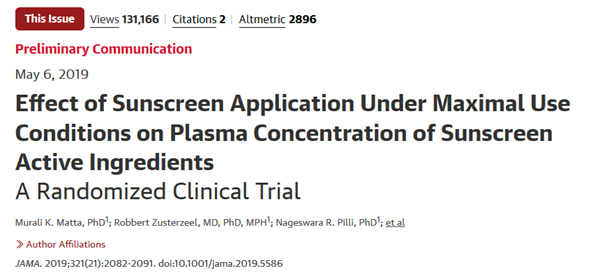
This concern has been compounded by the fact that certain filters – in particular oxybenzone – are potent endocrine disruptor meaning that they mimic oestrogen and can mess with your hormones. Thankfully we still have mineral filters such as zinc oxide and titanium dioxide which are currently the only filters recognized as being GRASE (Generally Regarded As Safe and Effective) which are not absorbed into the skin and which in my opinion provides superior protection anyway – and doesn’t degrade to boot!
So for me as a dermatologist, the issues around wearing sunscreen and following safe sun-protective behaviours like avoiding the peak mid-day sun, seeking shade and wearing sun-protective clothing are pretty cut and dried – especially living in a climate like South Africa! I’m pretty outspoken about my preferences for mineral sunscreens containing zinc or titanium dioxide but in reality, the best sunscreen is the one that you will actually use. Choose a sunscreen with a minimum of SPF30, make sure that it has broad UVA coverage, opt for sunscreens which are water and sweat resistant and reapply frequently. Capisce!



